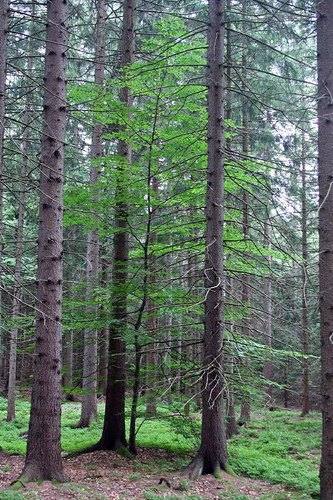
Photo: View from Hotel Window by mimi_k at flickr.com
When some of the earth’s people became farmers and herders, from about 10,000 years ago, their lives changed dramatically.
• Farming meant that people could settle in one place.
• They could store food for the future.
• Larger families were possible and in fact desirable. No longer did people have to carry their young children during long nomadic migrations. Instead, they needed all the labour they could get. Farming is intensive. This would have been the start of child labour! (We do our best to continue this trend at our school.)
• People could eventually live in much larger groups, leading ultimately to more diverse societies, skills and occupations.
• Farming could support a far larger population than hunting and gathering, so societies based on farming could grow quickly and become much more complex and varied.
This was not necessarily a better way to live; in some ways hunting and gathering in small bands would have been simpler, with fewer possessions, more sharing and less impact on the environment. But once the idea of farming began, it spread; the societies that were based on this new way of living grew, prospered, diversified and often became powerful.
One of the changes in the New Stone Age was the domestication of animals. Go to this site for a timeline of animal domestication.

1. List the first six animals to be domesticated and the approximate date. Then click on your favourite to find out the evidence about when, how and why they were domesticated by humans.
Plants were also domesticated. This means that humans bred the plants for the qualities they most wanted in them. Plants with larger wheat grains were chosen just as goats were chosen for smaller horns. Gradually the domesticated population varied significantly from the wild one.
Table of plant domestication
2. Write down four of the important crops and the approximate date of domestication.
3. If you lived in the Stone Age, would you have preferred to be a hunter, a gatherer, a farmer or a herder? Write a comment with your answer at the bottom of this post and give your reasons. Suggest any special skills you have that you might contribute to your group.


Neanderthals were a strongly built ancient human with a sloping forehead and eyebrows that jutted out. Their brains were 20% bigger than modern humans. They were well adapted to the cold because their body shape could retain heat. They were carnivorous and buried their dead. It is interesting that they were well adapted to the cold. They could have died out from the changes caused by a warmer climate after the ice ages. They also could have died out because they lacked the Homo sapiens’ talent for hunting on the open plains. They were less agile and fast than the Homo sapiens.